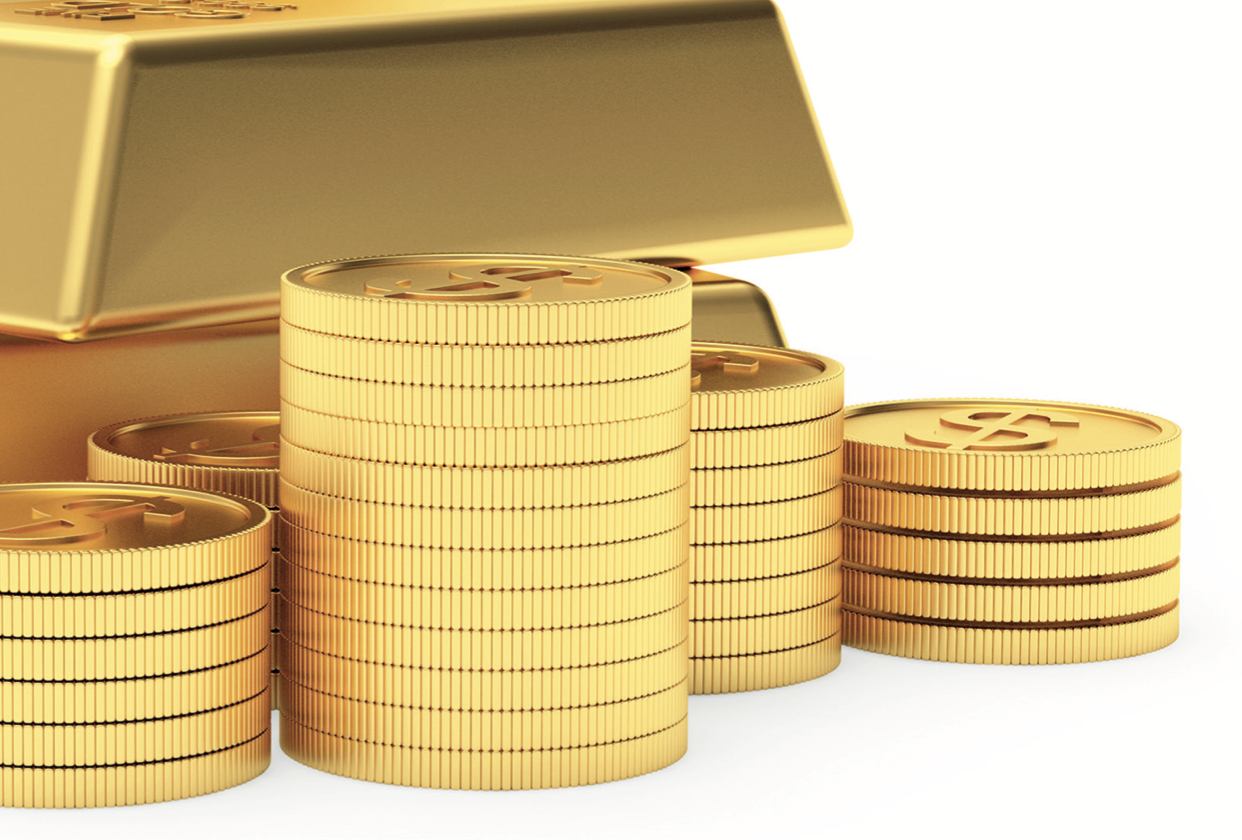By Olev Edur
While adding gold to your portfolio can be a good idea, you need to do it carefully
With inflation at its highest level since the early 1980s and interest rates worldwide being hiked in an effort to bring prices under control, is this a good time to consider gold as an investment? After all, the precious metal has historically been considered an effective hedge against inflation and has generally performed very well in times like these.
The key word, however, is “generally.” Gold’s performance in 2022 certainly failed to live up to its billing, prompting the following comment in an autumn CI Global Asset Management precious-metals update: “Gold is commonly thought to perform well in times of heightened inflation, and not surprisingly many gold watchers have been groaning about lacklustre performance.”
Lacklustre indeed. After climbing from $1,800 US an ounce at the beginning of 2022 to a peak of around $2,050 US in March, the price collapsed; by the end of October, gold was trading in the $1,650 US range, a drop of 20 per cent from the March peak and a price not seen since early 2020. By press time in December, however, gold had climbed back to the $1,750 US range[update in Dec], almost where it started the year—not great news, but at least encouraging.
Jon Case, a Toronto-based precious-metals portfolio manager with CI, says that while recent performance has been disappointing, short-term deviations don’t reflect longer-term trends. In late 2018, for example, gold was trading down in the $1,200 US range, and Case says he’s bullish about gold’s prospects for 2023.
“The outlook for gold hinges on interest rates and inflation,” he says. “Gold benefits from lower real [after-inflation] rates of return, and with central banks [notably the US Federal Reserve, or the Fed] hiking interest rates and the US economy softening, in 2023 we should reach a peak and that will be a catalyst for gold. If the interest-rate hikes continue beyond 2023, the effect on the economy will be even more severe, and that’s also positive for gold. Either way, the outlook is positive, but we’ll have to wait until the Fed is finished with its rate hikes to see which way it goes.”
William Mitchell, a Calgary-based portfolio manager with Bellwether Investment Management Inc., expresses a similar sentiment: “Rather than looking at the price of gold, you should look at what happens to the US dollar. Gold hasn’t performed well lately, in part because of the strength of the US dollar, but if we see the Fed pause its interest-rate hikes, the US dollar will lose strength while gold, as well as the Canadian dollar, should gain strength.”
Caution Advisable
Notwithstanding such optimism, the foregoing figures underscore the fact that gold prices can be very volatile over the short term, and that kind of risk is inimical to many retirees’ nest eggs. As a result, if you want to give precious metals more than a glance, you need to be careful.
“Everyone should talk to a financial advisor [about the role of gold in an investment portfolio], but most financial advisors think in terms of stocks and bonds,” Case says. “Gold is generally considered an investment for more sophisticated investors who take a broader approach to their portfolios, and gold fits into that broader definition.”
Case cites investment author Ray Dalio: “Dalio has done a lot of work on long cycles and found that all currencies lose value over time, so gold can fit well into a portfolio’s allocation of cash. In a senior’s portfolio, that’s particularly appropriate because seniors tend to have higher cash allocations than those who are younger.”
Still, some retirees may be attracted by the hedging benefits and potential growth to be had from gold, so the advice is that if you do want to go ahead, don’t bet the farm, or even a sizable chunk of it. “There’s been a lot of research into this subject, and the consensus seems to be that five to 10 per cent [of one’s total assets] is the proper allocation, although I haven’t seen any research on how this figure would shift over time as investors get older,” Case says.
Mitchell is even more guarded: “How much gold is enough? Retirees should probably limit their exposure to five per cent of the equity component in their portfolio, with equities making up half the total portfolio. It’s not a large percentage.”
Investment Options
Gold can be a volatile proposition, but if you decide you want to dip your toe into the waters, there are several investment alternatives available to you. But which are best?
“You can buy physical gold—bullion or coins, say—but the problem with that is that the transaction costs are really high and they’re embedded in the overall price, so you’re not aware of them,” Case warns. Furthermore, unless you’re buying very substantial amounts, gold bar and coin prices often include a premium over the market price to pay for production and handling, and if you want to store your gold in the bank, you’ll also have to pay storage costs; it can become quite expensive. The same is true of jewellery.
“In emerging markets, gold jewellery is a common way to invest, but the transaction costs can be high,” Case says. “You have the mark-up as well as fabricating costs, and the total can be anywhere from three to 20 per cent.” So, while coins or jewellery may be more tangible than other investments, they’re not very cost-effective ways of buying gold.
“A more cost-effective alternative would be to buy shares of a gold-mining company—several of the larger companies even pay dividends,” Case says. “But when it comes to buying stocks, you have to bear in mind that the risks can be greater.” (This is because in addition to gold price fluctuations, there are all the managerial and operational issues that can affect any resource company.)
Mitchell agrees that gold stocks are a better investment option than bars, coins, or jewellery and cites as a good choice Toronto-based Franco Nevada Corp.; this is not a mining or exploration company; rather, it holds a portfolio of income-generating assets and streams royalties and dividends to investors. “It also provides growth potential,” he adds.
ETFs and Mutual Funds
A variety of exchange-traded funds (ETFs) and mutual funds are available, although as an advisor, Mitchell says he has reservations about the total fees involved. “I’m always concerned about someone being charged fund fees on top of my own fees,” he says.
Case is less concerned about this option, noting that the fees can be quite low if you buy directly. “The most efficient way to buy gold is probably to invest in a low-cost mutual fund or ETF,” he says. “The biggest of these ETFs is SPDR Gold Shares, which trades as GLD on the New York Stock Exchange, and its trading fees amount to just 0.4 per cent—that’s a lot cheaper than bullion or jewellery.” He adds that CI recently launched a gold-bullion mutual fund and the cost is only 0.18 per cent. “That’s the lowest in Canada and one of the lowest in the world,” he notes.
The bottom line is that gold can be appropriate in retirees’ investment portfolios, as long as they understand the risks, but it should be accorded a relatively small place. “We generally suggest a diversified portfolio in which gold would have two main purposes,” Mitchell says. “First, it can help guard against inflation—although it hasn’t been very effective at this lately—and second, it can serve as a currency hedge. If you travel to the US, for example, and are concerned about exposure to the high US dollar, investing in gold stocks can help offset the added costs.”
Case adds: “The attraction of gold for investors is that it’s uncorrelated to other assets and provides a positive real return—that is, after inflation—over time.”
But both Case and Mitchell warn that this applies over the long term and, as has been seen over the preceding year, the shorter-term picture can be very turbulent.





